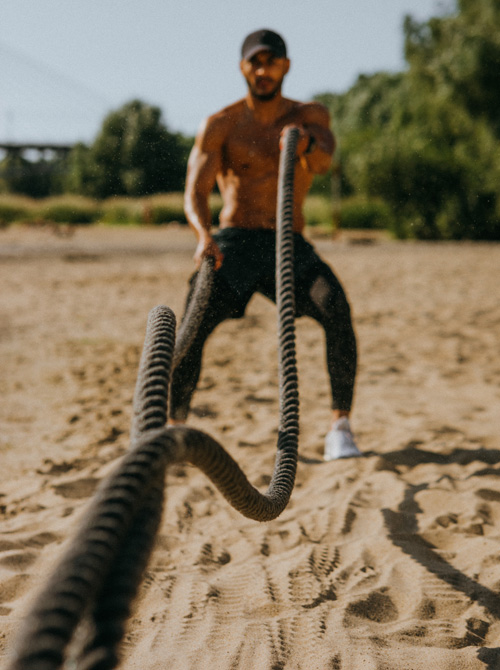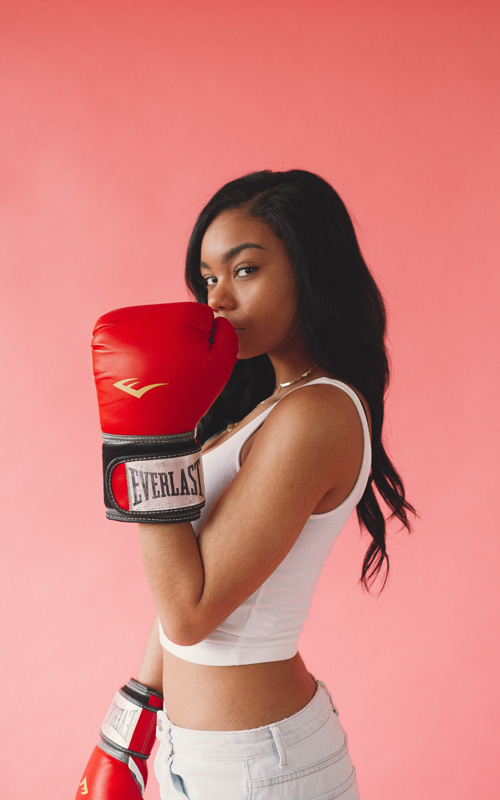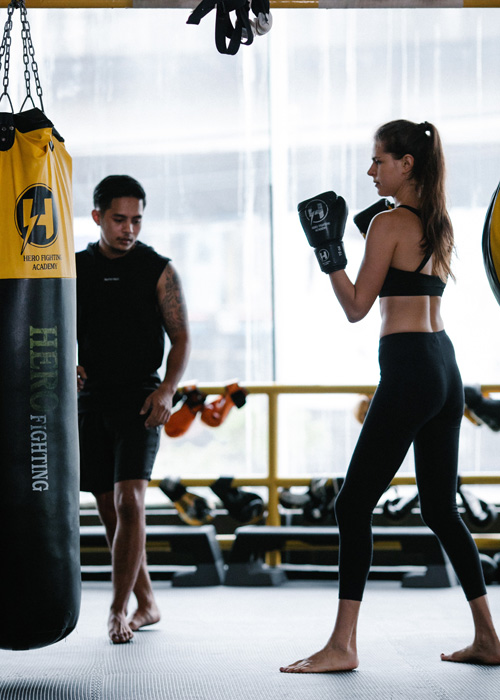Sports are not immediately thought of as a popular influencer marketing niche. It’s difficult to envision athletes huddling in front of a sports screen or pausing to Instagram the view. However, how often have you seen a sports star promoting something, even on a more traditional medium like television? For many years, athletes have endorsed products, some of them in ostensibly amateur sports. Sport is a subset of the health & fitness and fashion niches, two of the most influential influencer marketing sectors.
On the other hand, influencer marketing in sports is a tale of two halves. Typically, well-known athletes are associated with big-name sports companies. On the other hand, these celebrities frequently come with a price tag commensurate with their celebrity status. That may be acceptable for a multinational sports apparel company, but it is prohibitively expensive for a small local fitness brand. On the other hand, numerous lesser-known sporting influencers can help brands of any size maximize their marketing budget.
In this post, we take a broad look at why influencer marketing is effective in the sports industry and how it can benefit brands.
The Sports Industry is a Big Business
In 2018, the world sports market was valued at approximately $471.3 billion. Clothing accounted for $155.2 billion in spending, footwear accounted for $130.5 billion, equipment accounted for $127.2 billion, and bicycles and accessories accounted for $58.4 billion. This year, the spectator sports market expanded at a faster rate than the participatory sporting world, which together recorded 56.4 percent of the entire sports events market. The worldwide recreation market, of which sporting events are a subset, was valued at well almost $1,435.4 billion in 2018, according to industry estimates. However, while these numbers have decreased as a result of the recent COVID pandemic, they will almost certainly rise as more stadiums reopen and people feel more at ease attending sporting events in general.

As a result, many brands are conscious of this and strive to be associated with a healthy lifestyle. Because of this, businesses are expanding their product lines to appeal to those who are interested in fitness and healthy living. Cosmetics companies are now catering to the desire of fitness enthusiasts to look their best daily.

Influencers Generate Interest at a Fraction of Traditional Media
Americans allocate $56 billion annually to sporting events, according to a survey. This amount includes the cost of the ticket, public transit, food, and beverages. Marketers must first spread the word to attract those massive audiences.
Sports influencers make up a significant portion of the audience at sporting events that take place every year. To generate interest in a community softball game or the Olympics, influencers must be engaged. Influencers can generate interest in your event for a fraction of the cost of a billboard or television advertisement.
Sports Influencers Are Enthusiastic
Influencers frequently have a strong passion for their favorite sports and teams, which is evident in every post they make, in addition to knowing everything there is to know about their favorite teams and sports in general. Fans who are passionate but popular can be found at the local level as well, and in some cases, they can be found in high school and college sports as well.
If you can collaborate with that sports fan by providing free tickets and other VIP perks, you will discover that the combined passion of both the team and the influencer is contagious. Finding and retaining influencers necessitates extensive investigation. Some examples of how influencer marketing has benefited international events are provided below.
The Latest Trends in Influencer Marketing in the Sports Industry
In recent years, there have been a few notable impacts in sports influencer marketing. Numerous sports and fitness players enjoyed sports influencers to be their biggest source of motivation, directing them toward their ambitions. This is especially true of non-stars. While a sportsperson may admire a successful man, he or she may envisage that individual was once like them. Many of these influencer marketing will gladly offer fans advice and support concerning their coaching and athletic pursuits. Indeed, some fans, fueled by their heroes’ inspiration, use their heroes as informal organizational coaches and mentors. Even though this advice is not as tailored as that of a professional trainer, it can still be extremely beneficial to the recipients. When sportspeople seek advice from sports influencer marketing, they can simply search for relevant hashtags like #trainingsession.

A further emerging trend in sports influencers is the efficient web segmentation of fans into tribes. For instance, each English football club has a devoted (some might say rabid) fan base that participates and communicates almost entirely about the club’s activities. Larger brands’ fan bases may be similarly sectioned. Adidas, Nike, and Puma are all massive sport ready-to-wear and sportswear companies that sell a wide range of products for a wide range of sports. In 2020, Nike’s sportswear sales are expected to reach $39.1 billion. However, each sport frequently has numerous tribes, and collaborating with the wrong influencer to reach a different tribe is pointless. Tribes are groups of people who share similar interests and values.
Innumerable gigantic struck between some of the largest and most powerful sports events brands and the league’s biggest stars take the size and power of the athletes’ social media followings into account. Nike, for example, did not sign Cristiano Ronaldo based solely on his undeniable athletic ability. In addition, he gave them access to 270 million Instagram followers.

Why Are Sports Influencers So Powerful?
There has been a noticeable upsurge in physical fitness in recent years. Sport and other forms of physical activity play a critical role in this. While COVID has slowed down things somewhat, particularly with shutdowns involving sports performance and live sporting events displaying, more individuals than ever know the value of the physical activity.
Influencers in sports and fitness are always popular with their fans, who happily go online and read regarding their stars’ latest accomplishments or start picking up mentoring tips from them. They are, even so, more critical than ever now, as people are stranded at home and looking for alternate methods of training or simply ways to pass the time.
Naturally, collaborating with a high-profile athlete in a sport pertinent to your brand greatly enhances your legitimacy with that athlete’s fans/followers if your market is large enough. Even if you cannot afford an A-list sport and recreation celebrity, there are a plethora of fewer sports events and strength and conditioning influencers who inspire one‘s fans.
Upfluence, an influencer platform, refers to “fitfluencers” as a subgenre of sporting influencers. Fitfluencers are social networking influencers who have built a community around their healthy lifestyle choices. Their supporters respect people as “actual people,” and they valuation their viewpoints more than those of famous people, whom they perceive to lead completely different lives.
Choosing the Right Sporting Brand Influencers
The most essential thing to keep in mind is to focus on a distinct brand image for the tribes to which one’s united supporters and clients belong. As your subject, choose someone well-known and whose name you are familiar with. Because sports fans are notoriously partisan, continuing to work with “inappropriate” influencers may harm how consumers perceive your brand.
Prospective influencers should be subjected to an involvement analysis by users, just like any other form of celebrity endorsement. Your athlete will add little value to your brand if he or she is preoccupied with coaching and has no time to spend on the computer or interact with his or her fans.

Collaboration with an influencer who is hopeful, active, and involved, even if they do not have a large following, may be more beneficial for products that promote a specific sport. They have a much better chance of attracting the right followers for your brand than many more well-known influencers.
Indeed, you may decide to use influencer marketing techniques outside of the sporting niche if you can establish a strong bond between them and the various types of people who are likely to be potential buyers.
Final Thought
Sports brands can reach potential customers in previously inaccessible markets by utilizing influential marketing campaigns. Sporting goods companies, for example, can reach customers who are motivated to try (or even participate in) a new sport as a result of their influential lifestyle and encourage them to continue. This strategy will also enable sports brands to establish credibility within the sporting community at a low cost and in a short period.
As we’ve discussed throughout this article, the first step is to determine who the target audience for your campaign is. Who are you attempting to communicate with? Without knowing who you want to influence, it is impossible to select the most appropriate sporting influencers. Furthermore, you must exercise extreme caution when selecting influencers whose followers are representative of the correct tribe for your market. Consider the following scenario: you’re trying to sell football merchandise to Manchester City fans. Working with a popular influencer who has red-colored branding on their social media pages and who supports Manchester United is therefore pointless in this situation.
The use of sports influencers in advertising campaigns for the sports industry broadens the scope of the advertising spectrum. Influencer marketing, according to marketers, is expected to continue to grow in popularity and relevance in the foreseeable future. In many ways, it is a powerful and effective marketing method that produces immediate results, and many people believe that its popularity and relevance will only continue to grow in the years ahead.